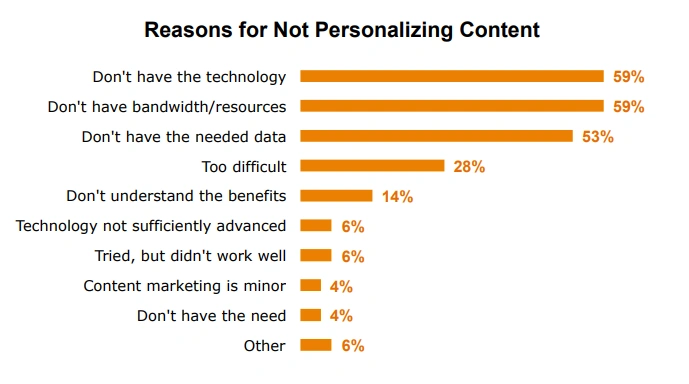Content Personalization: How To Fulfill The Needs Of Your Audience
Content marketing is important, but one of its goals is to ensure that it resonates with the right audience. How can we utilize customer data in order to automate the process of personalization to provide unique experience to your customers?

First of all, what is data-driven marketing?
Simply put, data-driven marketing is the idea of using prospect data in order to provide relevant information based on preferences and interests of the audience. It has been used by companies in its basic form for years, in some cases maybe even centuries. The sheer process of selecting a target audience is, at its core, based on this principle.
So why are we giving it so much attention, if it's already tried and true? Well, what changed is the technology which allows us to utilize it in practice. Detailed databases with thousands or millions of entries, tagging, automated optimalization and content targeting are just a few things that became much more popular in the recent years, changing the way we are capable of dealing with the data.
For a large part, this made our work easier - we now have the ability to declare proper audience for any sort of content with unprecedented ease. On the other hand, setting up and managing the process is now even more difficult. We no longer have any excuse to simply go with our guts instead of using hard data.
Why is content personalization necessary?
According to Gartner, by 2018 companies that are fully invested in personalization will outsell those who are not by 20%. Twenty percent. For many, this might be the difference between staying in business or closing down. Even basic demographic data - such as age and gender - can easily help us market to the correct audience. Isn't it easier to display potentially interesting clothing offers when you know that the person accessing the website is a 26 years old male?
Personalization is a game of statistics, really. Depending on what your sector is, you are going to be looking at different conditions on which you will segment your audience. Regardless, the closer you hit to their actual interests, the larger your chance of making a sale.
Where do we see personalized experience?
One of the best examples are online services, such as Amazon. The fact that it acts as an internet store on top its other products makes it a perfect fit. The products you view, categories you choose and pages you visit help the company create a profile of your interestes and background.
You probably recognize the "recommended for you" tab that shows up while you're at product page. That's part of the idea - the service recognizes what you're searching for, and provides you with other products that you might potentially be interested in based on your journey so far.
According to a study by Demmand Metric, 80% of marketers consider personalized content to be more effective than its unpersonalized versions.
The whole process is completely automated. Of course it still requires people for management and strategy purposes, but once everything has been set up and is working properly, the rest is simply fire-and-forget. With the emergence of A/B testing, recommendations based on customer journey, automated mailings and CRM systems we simply cannot allow ourselves to provide everyone with the same sort of experience. Instead, we need to focus on creating multiple paths that users will be able to follow.
What challenges do we face while implementing content personalization?

The primary ones, according to the Demand Metric's study, the top reasons for not personalizing content are the ones that are the most difficult to overcome: the lack of technology (59%) and lack of bandwidth or resources (59% as well).
Interestingly, the third most reported problem is the lack of necessary data, with a result of 53%. Afterwards, we can see a sharp decline to 28% with personalization being "too difficult", which can quite easily be addressed were the first three problems solved. If you have enough manpower, enough data, and proper technology to apply the data, then the level of difficulty drops considerably. Solutions such as Social WiFi can help to increase the amount of data gathered, as well as provide the backbone for customer segmentation.
Much still remains to be done. Perhaps in the future, thanks to additional machine learning components, our solutions will become even more advanced. When it comes to providing personalized approach to content creation, most marketing specialists agree that it is the right way to go.
Get started today & see what your marketing strategy has been missing
- 14 days free
- Easy setup
- Cancel anytime